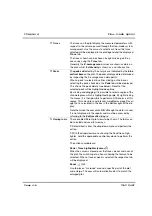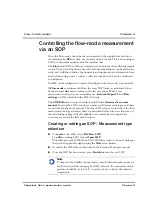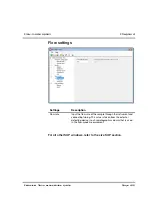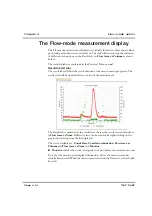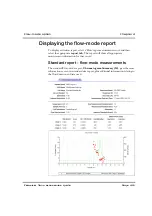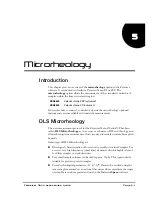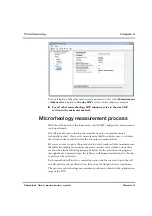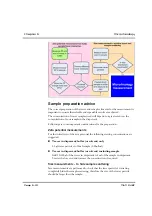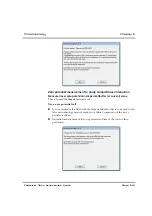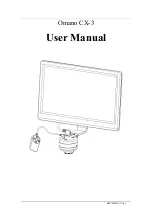
Chapter 5
Microrheology
Page 5-2
MAN 0487
5
Extends viscoelastic measurements into ranges inaccessible by mechanical
rheometry techniques.
Fast measurements are possible, with all frequencies effectively sampled
simultaneously.
Applications for viscosity of protein solutions and onset of protein aggregation.
DLS Microrheology - basic theory
DLS Microrheology uses tracer probe particles to measure the relationship
between stress and deformation. Both DLS and ELS measurements are done to
ensure robust measurement methodology.
A measurement consists of the 3 main measurement steps.
Ensure suitable tracer particle surface chemistry
Zeta potential measurement step to show no significant interaction between
the tracer particles and measurement sample.
The tracer is initially measured in the sample buffer/dispersant (or solvent)
alone with no sample added. sample is then added and a second measurement
performed. The two zeta potential results are then compared - a small relative
change in zeta potential in the presence of the sample indicates minimal inter-
action between the sample and tracer particles.
Ensure suitable concentration and dispersion of tracer particles
Size measurement step for evaluation of appropriate scattering signal and PSD
to meet this condition.
A size measurement is run to see that tracer scattering dominates signal, and
has a narrow monomodal Intensity PSD peak, i.e. tracers are dispersed prop-
erly.
Measure Correlation function of tracer particles
Perform a microrheology measurement and extract microrheology data from
Mean Square Displacement (MSD) plot.
Summary of Contents for Zetasizer Nano Series
Page 2: ......
Page 3: ...Zetasizer Nano accessories guide MAN0487 Issue 1 1 April 2013...
Page 12: ...Chapter 1 Introduction and accessory range Page 1 6 MAN 0487...
Page 42: ...Chapter 2 General cells and cuvettes Page 2 30 MAN 0487...
Page 98: ...Chapter 5 Microrheology Page 5 20 MAN 0487...
Page 125: ......



